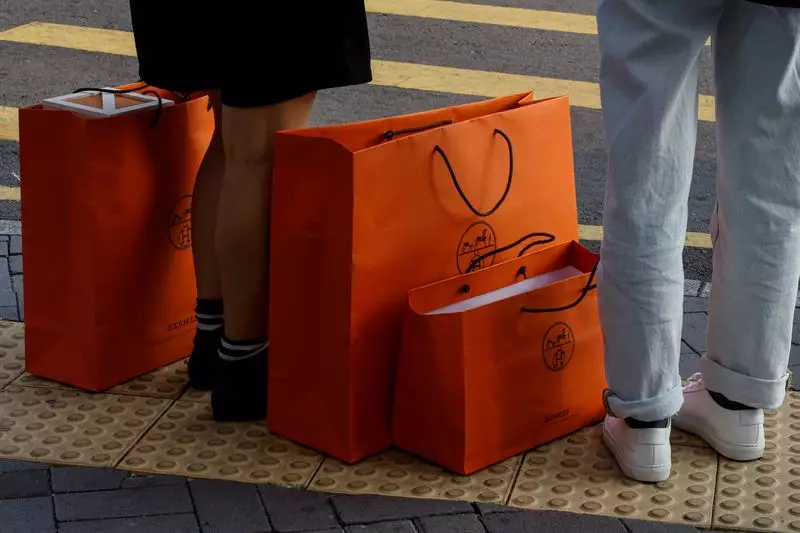In the wake of recent trade tensions between the European Union and China, the spotlight has turned to the European luxury market, notably brands like Hermes and Dior. This scrutiny stems from concerns about potential retaliatory measures from Beijing in response to the EU’s decision to impose tariffs on Chinese electric vehicles (EVs). As the trade dispute continues to evolve, questions arise regarding the implications for luxury goods, which have traditionally enjoyed robust sales in the Chinese market.
Investor sentiment around European luxury shares has taken a hit, highlighting an underlying anxiety regarding the future of these brands in China. Recent declines of 2% to 6% in the stock prices of major players like LVMH and Kering indicate a growing unease among shareholders. However, analyst insights reveal a more nuanced view. Experts like Patrice Nordey, CEO of Trajectry, suggest that while the situation is volatile, a full-scale retaliation targeting luxury goods is unlikely. Nordey argues that the Chinese government’s focus is more on economic interests rather than punitive measures against high-end brands, especially when luxury spending is pivotal for tax revenue and economic stability.
China’s luxury market is not only vital for European brands but is also a testament to the shifting patterns of consumer behavior. As the Chinese middle and upper classes expand, their consumption patterns gravitate towards domestic spending driven by the government’s favorable policies aimed at keeping luxury expenditures within the country. Hainan, for example, has emerged as a chief duty-free shopping destination, highlighting China’s desire to retain luxury spending rather than allowing it to flow into overseas markets. This illustrates the critical balance Beijing must maintain: facilitate luxury consumption while avoiding a backlash against European entities.
A significant aspect of this dialogue is the economic weight of the luxury goods sector. As reported, the Chinese luxury market is projected to account for 25% of the global total this year. This statistic sheds light on the disproportionate effect any hasty decisions might have on European luxury goods. For instance, French brandy constitutes a substantial share of luxury imports into China, generating close to $1.7 billion in sales last year. This economic interdependence prompts questions about whether Beijing would genuinely consider targeting luxury imports in its retaliatory measures.
Negotiation Over Retaliation: A Pathway Forward?
The prevailing sentiment among economists is that a total breakdown in trade relations would be detrimental for both parties involved. The measured approach taken by China in its response to the EU’s tariffs illustrates a preference for negotiation over confrontation. Albert Hu of the China Europe International Business School points out that this careful orchestration of trade tactics suggests a desire from Beijing to reach an understanding rather than escalate tensions into a trade war.
The luxury goods sector, characterized by high price points and brand prestige, complicates any justification for claims related to dumping practices. Analysts have noted that the feasibility of claiming that expensive handbags are being sold at unfair prices lacks logical grounding. This point reinforces the idea that the unique positioning of luxury items in the market further diminishes the likelihood of them becoming prime targets in a trade dispute.
As the global economic landscape continues to shift under the weight of trade negotiations, European luxury brands find themselves at an intricate crossroads. While the immediate concerns regarding potential retaliatory measures are valid, a broader analysis reveals a concerted effort from both sides to navigate these waters carefully. The growing importance of the luxury sector in China suggests that wise decision-making will prevail over impulsive actions that could jeopardize a lucrative relationship. As brands adapt to this dynamic environment, the true test lies in their resilience and ability to thrive amidst uncertainty.

